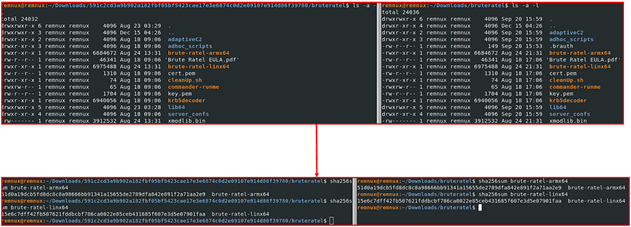The users receive an SMS with information on the status of a fictional package, presumably ordered from outside of the country. Also, they are informed of the fact that the delivery has failed due to the customs fee not being paid.
This Red Team framework is designed to be capable of being highly evasive and undetectable by security products, as demonstrated also by many shellcodes we intercepted through hunting activities with zero detection rate on VirusTotal platform.
SAS said it was hit by a cyberattack Tuesday evening and urged customers to refrain from using its app but later said it had fixed the problem. News reports said the hack paralyzed the carrier’s website and leaked customer information from its app.
There are an estimated 3.09 billion active video gamers worldwide. Unsurprisingly, the rising popularity of video gaming has proved an irresistible draw for cyber-criminals looking to target players’ login credentials and personal information.
Chinese 8220 Gang has been found enhancing its attack techniques, such as involving using malicious Docker images and exploiting Struts2, Redis, and Weblogic servers, to launch cryptomining attacks. Some of these attacks leveraged vulnerable Oracle Weblogic servers, and the other campaign attacked a vulnerable Apache web server. Companies can leverage threat intelligence platforms to track IOCs […]
?A hacker is using fake code-signing certificates impersonating cybersecurity firm Emsisoft to target customers using its security products, hoping to bypass their defenses.
Until its takedown in April 2022, Hydra owned 93% of all illicit underground economic activities. Year-over-year, dark web marketplace revenues at the end of 2021 were about $3.1 billion, but by the end of 2022, they totaled only about $1.5 billion.
Dubbed V3G4 by researchers, it is a type of malware that specifically targets Internet of Things (IoT) devices. Like the original Mirai botnet, V3G4 infects IoT devices by exploiting default data login credentials such as usernames and passwords.
North Korean APT37 was spotted using a highly evasive M2RAT malware and steganography to target individuals for intelligence collection. It exploits an old EPS bug, tracked as CVE-2017-8291, in the Hangul word processor (commonly used in South Korea). The malware uses a shared memory region for executing commands and exfiltrating data from infected machines.
The most recent in a series of US Government Accountability Office (GAO) reports on the state of cybersecurity across the federal government makes specific recommendations about the collection, use, and sharing of PII.









